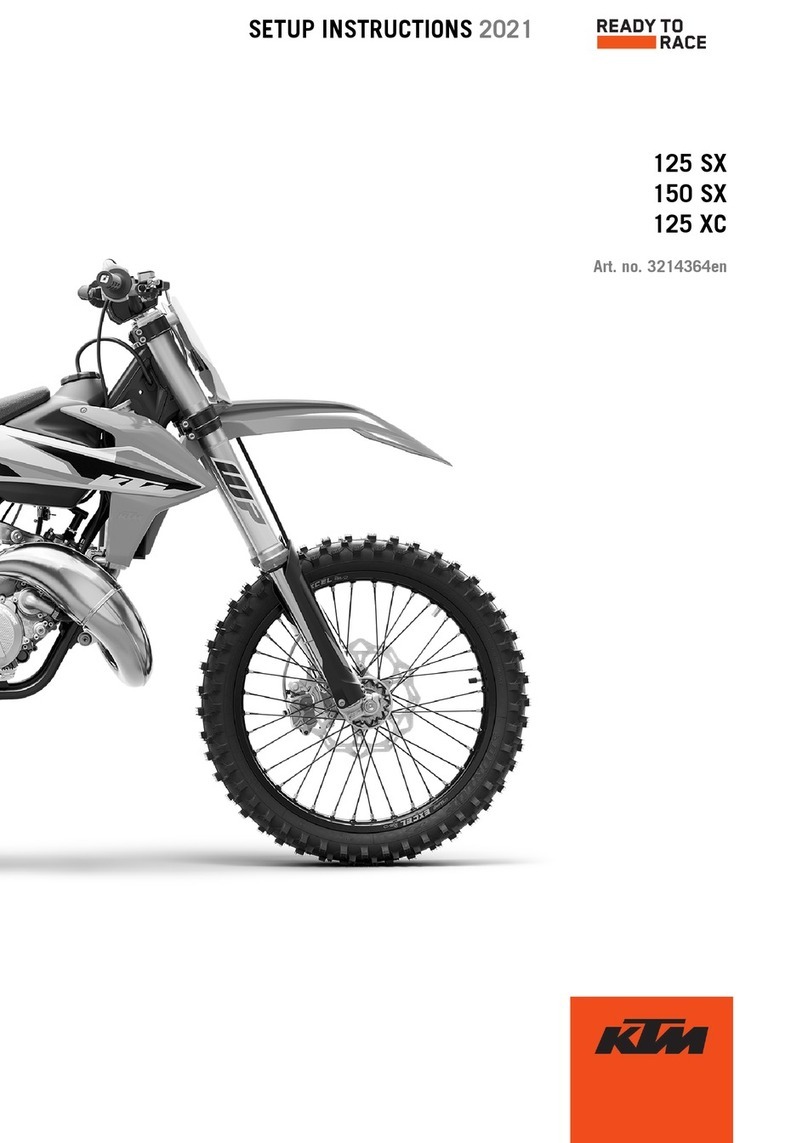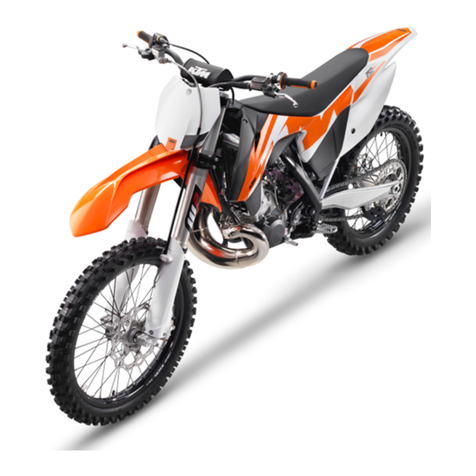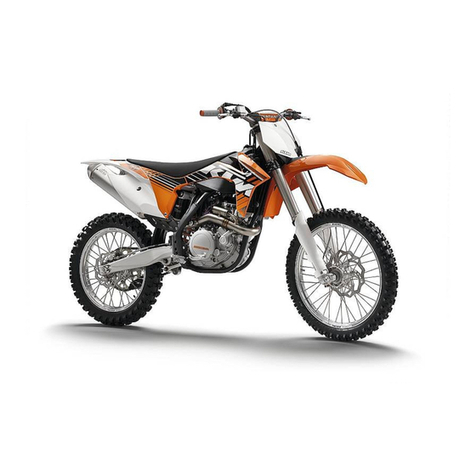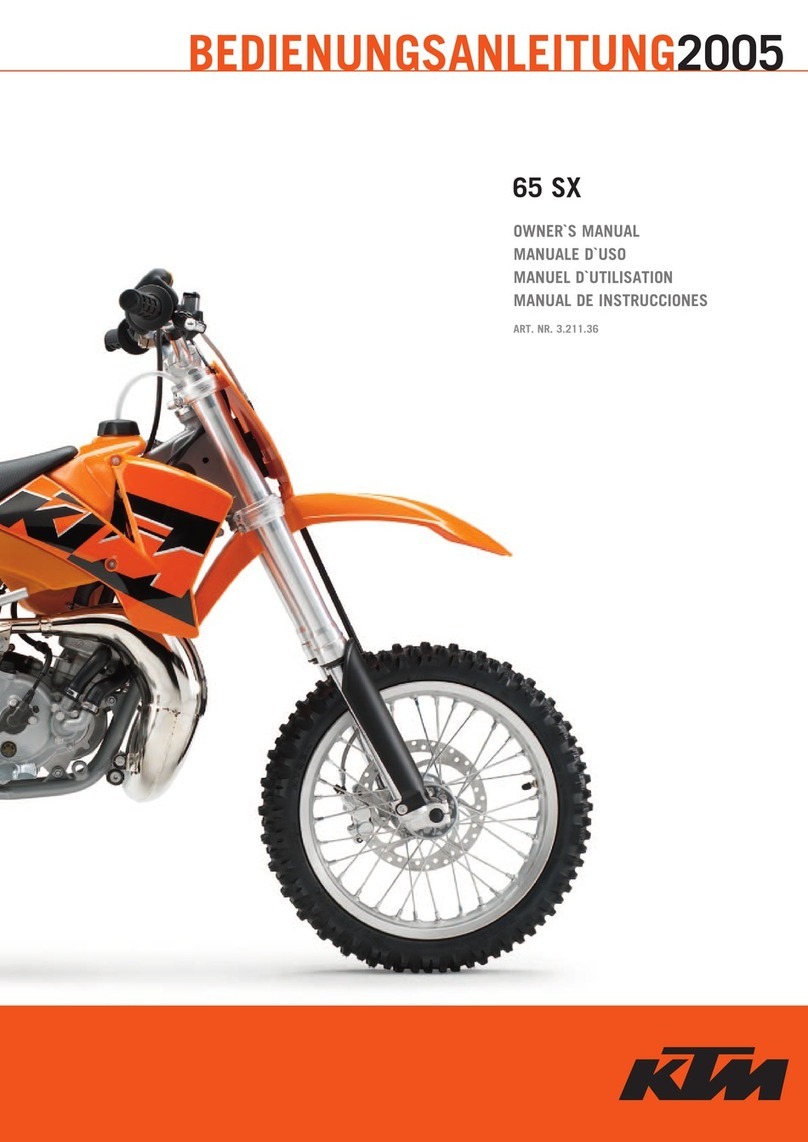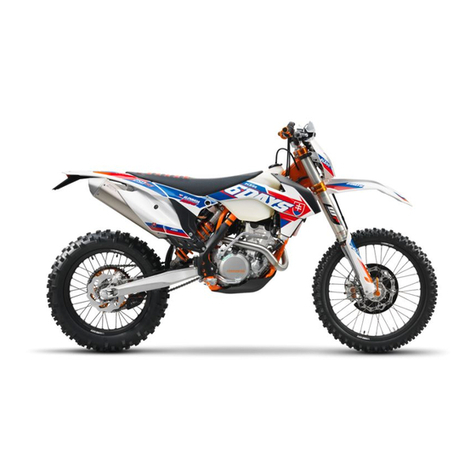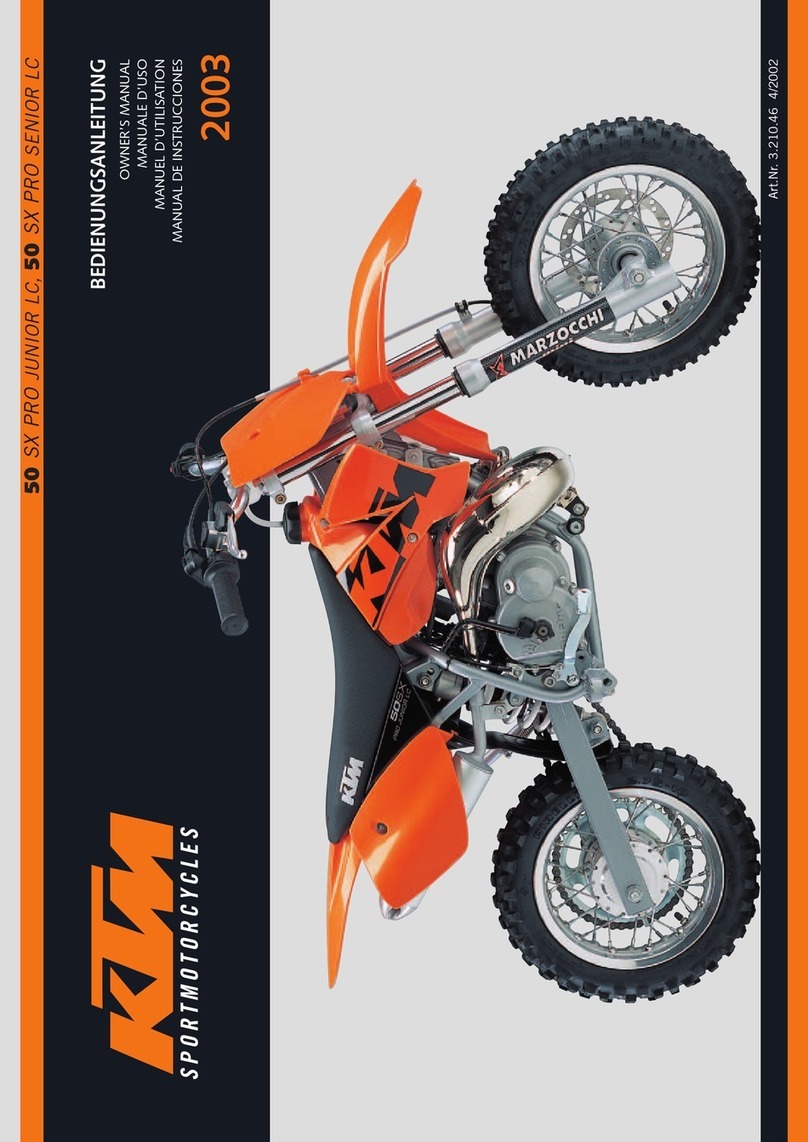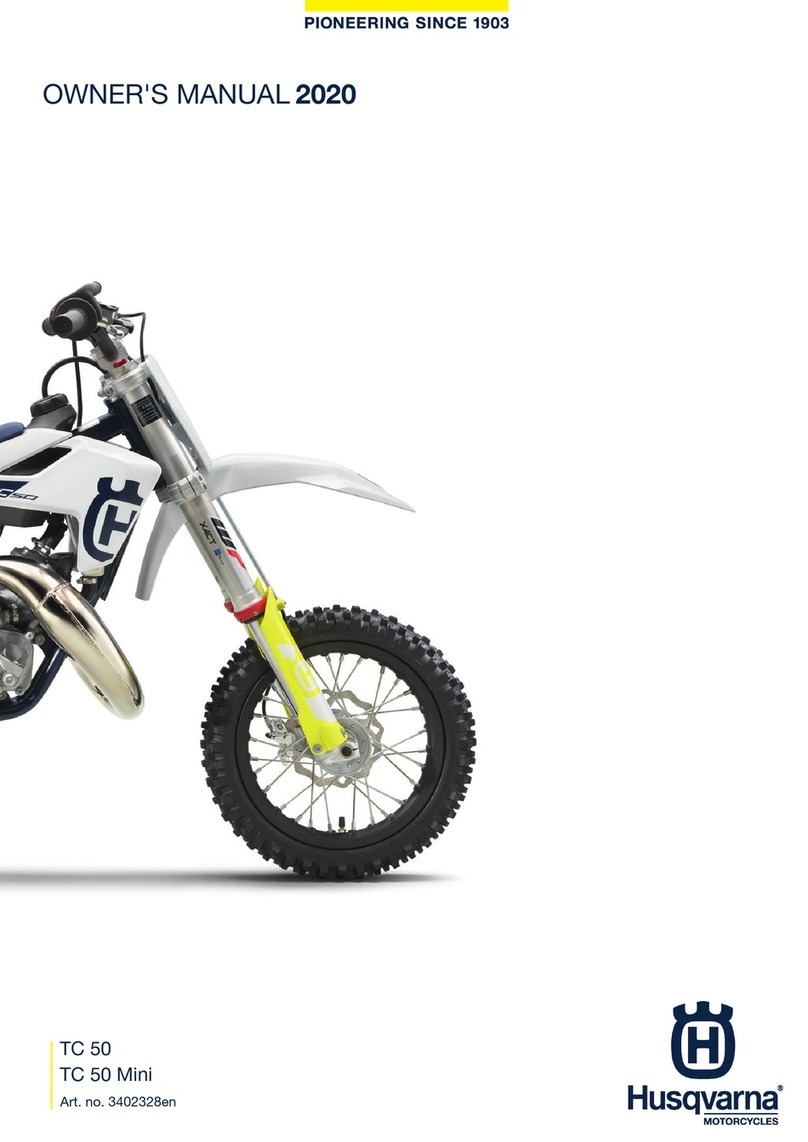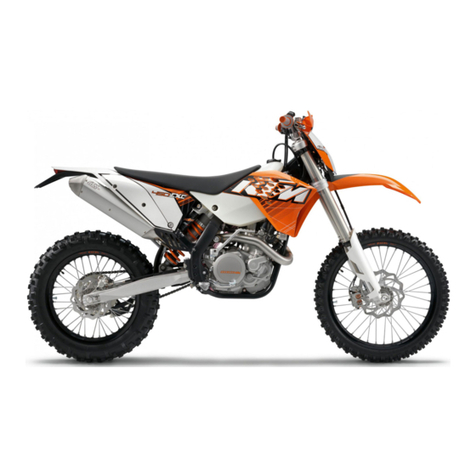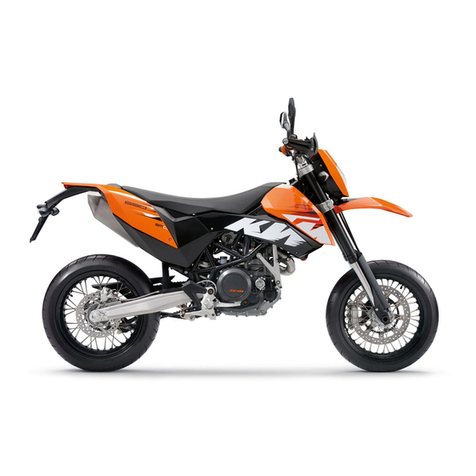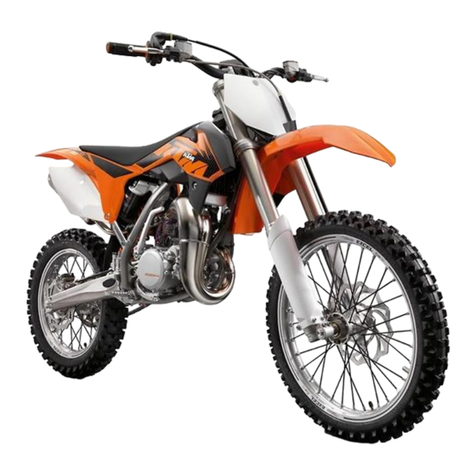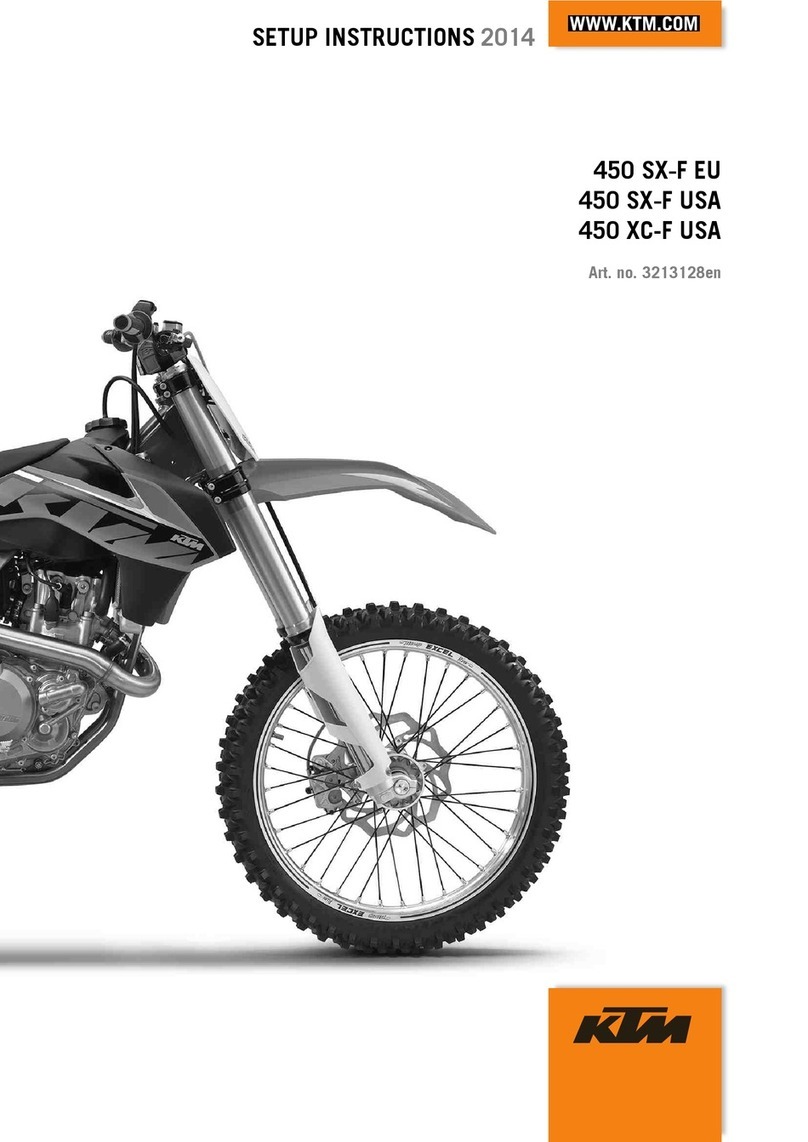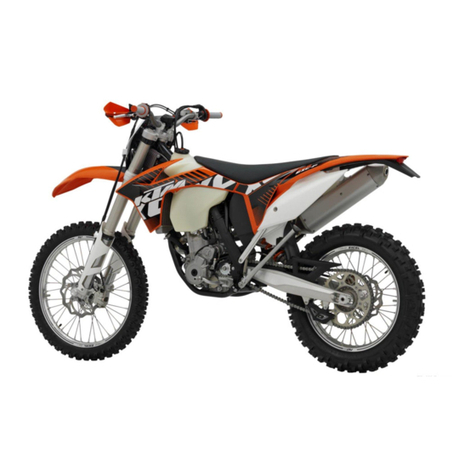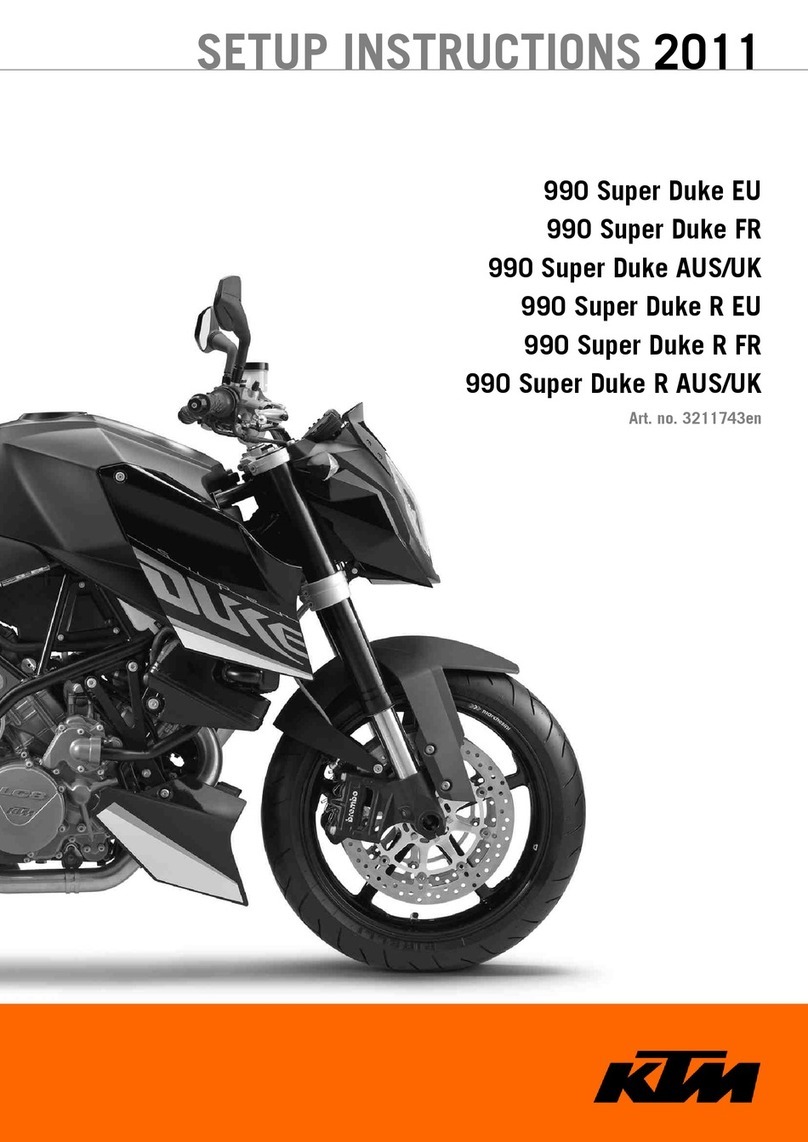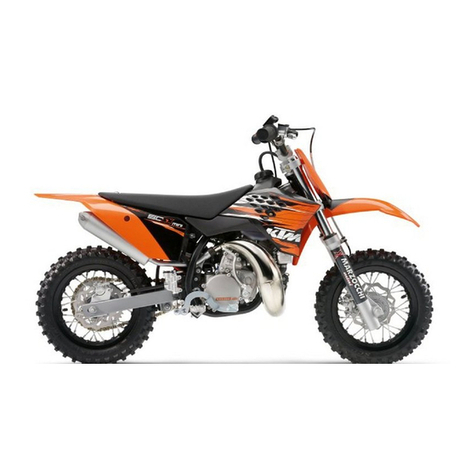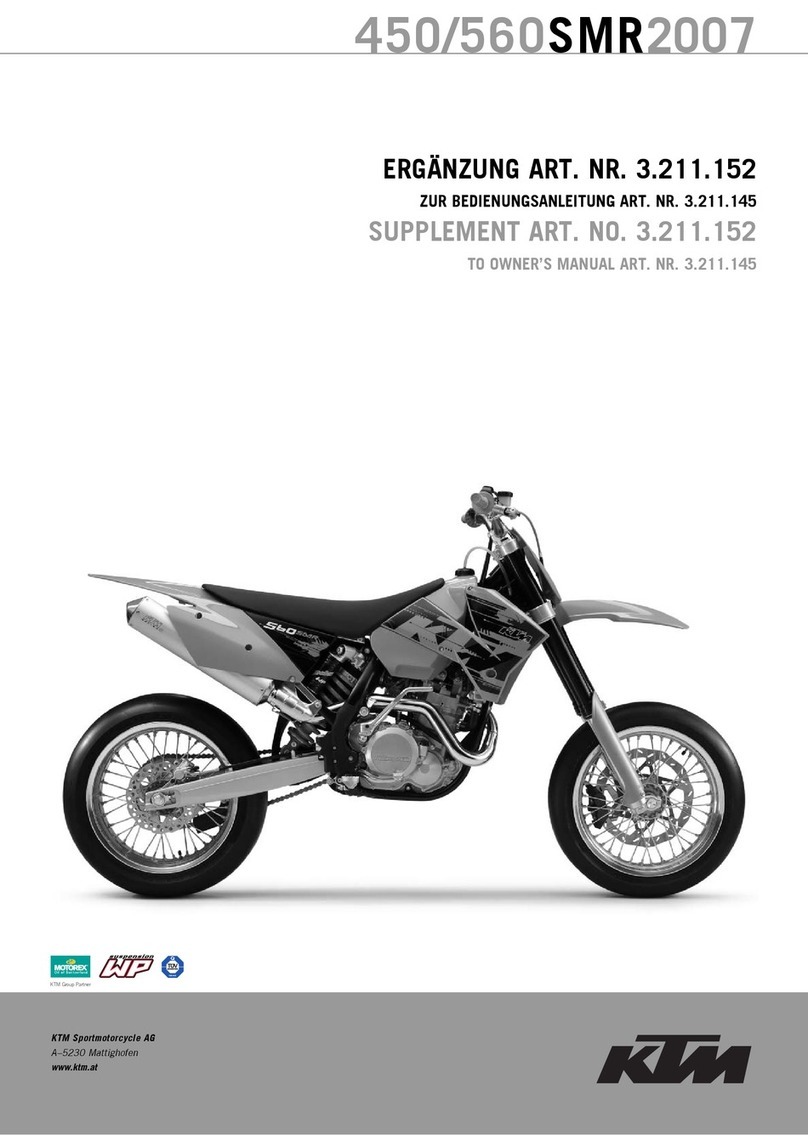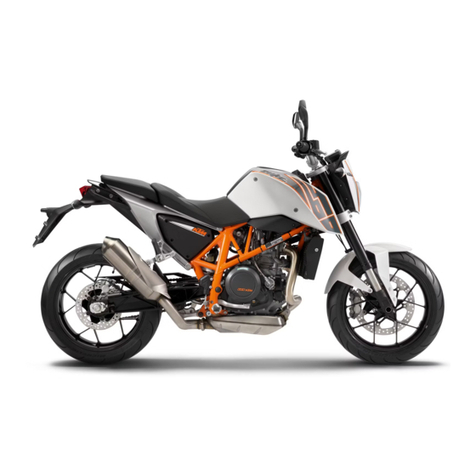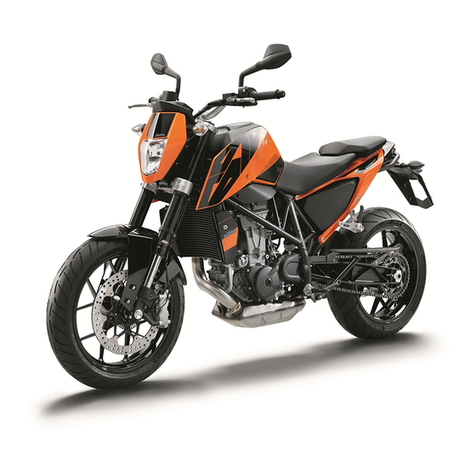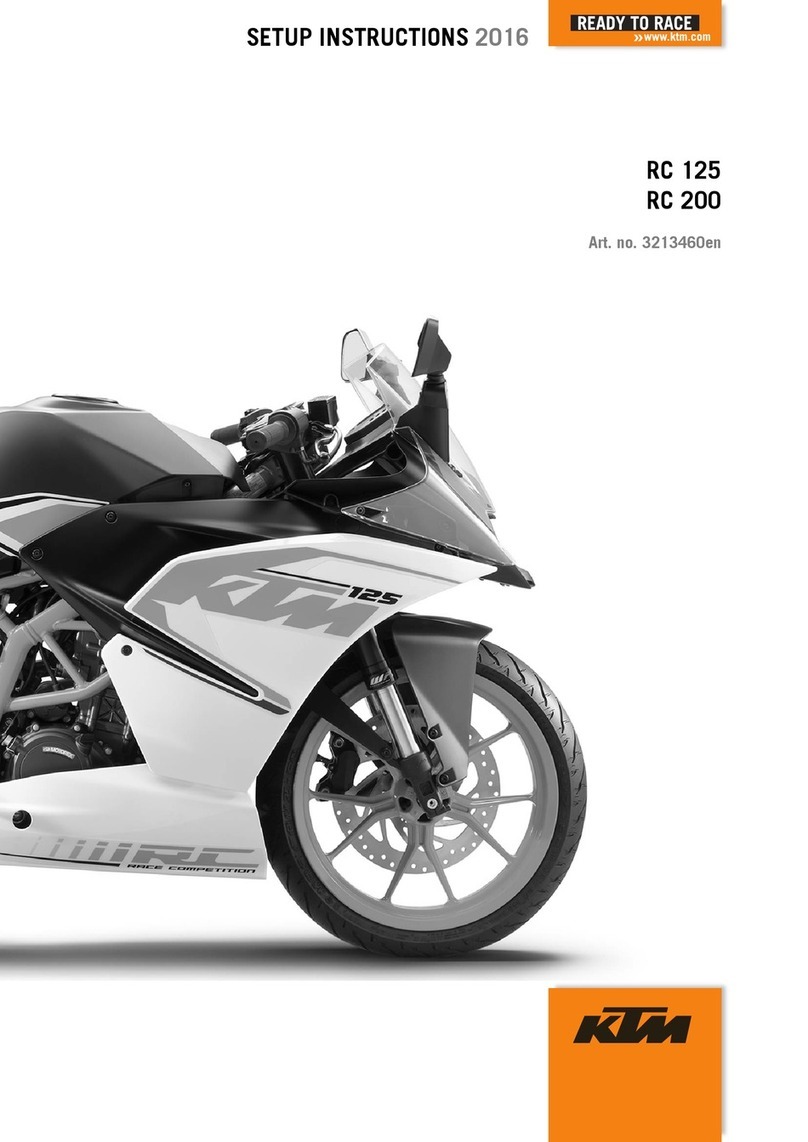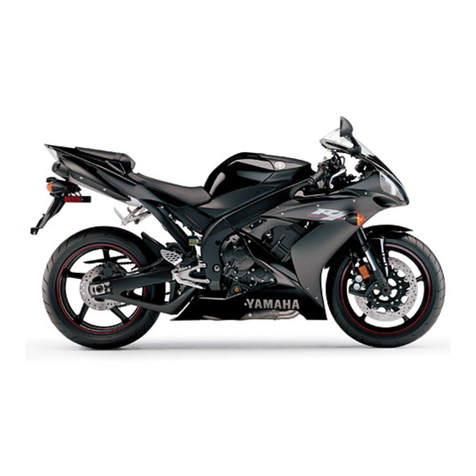ENGLISH
3
Page
IMPORTANT NOTES . . . . . . . . . . . . . . . . . . . . . . . . . . . . . .1
SERIAL NUMBER LOCATING . . . . . . . . . . . . . . . . . . . . . . .4
Cassis number . . . . . . . . . . . . . . . . . . . . . . . . . . . . . . . . .4
Engine number, engine type . . . . . . . . . . . . . . . . . . . . . .4
OPERATION INSTRUMENTS . . . . . . . . . . . . . . . . . . . . . . .4
Clutch lever . . . . . . . . . . . . . . . . . . . . . . . . . . . . . . . . . . .4
Hand decompression lever . . . . . . . . . . . . . . . . . . . . . . .4
Choke lever . . . . . . . . . . . . . . . . . . . . . . . . . . . . . . . . . . .4
Hand brake lever . . . . . . . . . . . . . . . . . . . . . . . . . . . . . . .5
Speedometer . . . . . . . . . . . . . . . . . . . . . . . . . . . . . . . . . .5
Tachometer . . . . . . . . . . . . . . . . . . . . . . . . . . . . . . . . . . .5
Indicator lamps . . . . . . . . . . . . . . . . . . . . . . . . . . . . . . . .5
Ignition lock, with 4 switch position . . . . . . . . . . . . . . . .6
Ignition lock with 3 switch position . . . . . . . . . . . . . . . . .6
Combination switch . . . . . . . . . . . . . . . . . . . . . . . . . . . .6
Emergency OFF button . . . . . . . . . . . . . . . . . . . . . . . . . .6
Emergency OFF switch . . . . . . . . . . . . . . . . . . . . . . . . . .7
Filler cap . . . . . . . . . . . . . . . . . . . . . . . . . . . . . . . . . . . . .7
Fuel . . . . . . . . . . . . . . . . . . . . . . . . . . . . . . . . . . . . . . . . .7
Fuel tap . . . . . . . . . . . . . . . . . . . . . . . . . . . . . . . . . . . . . .7
Shift lever . . . . . . . . . . . . . . . . . . . . . . . . . . . . . . . . . . . .8
Kickstarter . . . . . . . . . . . . . . . . . . . . . . . . . . . . . . . . . . . .8
Foot brake pedal . . . . . . . . . . . . . . . . . . . . . . . . . . . . . . .8
Compression damping of fork . . . . . . . . . . . . . . . . . . . . .8
Rebound damping of fork . . . . . . . . . . . . . . . . . . . . . . . .8
Compression damping of shock absorber . . . . . . . . . . . .9
Rebound damping of shock absorber . . . . . . . . . . . . . . .9
Seat lock . . . . . . . . . . . . . . . . . . . . . . . . . . . . . . . . . . . . .9
Supporting strap for the passenger . . . . . . . . . . . . . . . . .9
DRIVING INSTRUCTIONS . . . . . . . . . . . . . . . . . . . . . . . . .10
LUBRICATION AND MAINTENANCE SCHEDULE . . . . . . .14
MAINTENANCE WORK ON CHASSIS AND ENGINE . . . . .16
Tool kit . . . . . . . . . . . . . . . . . . . . . . . . . . . . . . . . . . . . . . .16
Checking and adjusting the steering head bearing . . . . . . .16
Changing the spring preload of the shock absorber . . . . . .17
Checking the rubber ring on the shock absorber . . . . . . . .17
Lubricate rear shock absorber linkage . . . . . . . . . . . . . . . .17
Checking chain tension . . . . . . . . . . . . . . . . . . . . . . . . . . .18
Correcting chain tension . . . . . . . . . . . . . . . . . . . . . . . . . .18
Chain wear . . . . . . . . . . . . . . . . . . . . . . . . . . . . . . . . . . . .18
Chain maintenance . . . . . . . . . . . . . . . . . . . . . . . . . . . . . .19
Maintaining chain tension eccentrics . . . . . . . . . . . . . . . . .19
General information about KTM disc brakes . . . . . . . . . . .19
Changing the basic position of the handbrake lever . . . . . .20
Page
Checking of brake fluid level - front brake . . . . . . . . . .20
Refilling the front brake fluid reservoir . . . . . . . . . . . . .20
Checking the front brake pads . . . . . . . . . . . . . . . . . . .21
Changing the basic position of the brake pedal . . . . . . .21
Checking the rear brake fluid level . . . . . . . . . . . . . . . .21
Refilling the rear brake fluid reservoir . . . . . . . . . . . . . .21
Checking the rear brake pads . . . . . . . . . . . . . . . . . . . .22
Dismounting and mounting the front wheel . . . . . . . . .22
Dismounting and mounting the rear wheel . . . . . . . . . .22
Checking the damping rubbers in the rear wheel
. . . .23
Tires, air pressure . . . . . . . . . . . . . . . . . . . . . . . . . . . . .24
Battery . . . . . . . . . . . . . . . . . . . . . . . . . . . . . . . . . . . . .24
Charging the battery . . . . . . . . . . . . . . . . . . . . . . . . . . .24
Main fuse . . . . . . . . . . . . . . . . . . . . . . . . . . . . . . . . . . .25
Fuses for indivitual power-consuming units . . . . . . . . . .25
Opening the head light mask . . . . . . . . . . . . . . . . . . . .25
Headlight range adjustment . . . . . . . . . . . . . . . . . . . . .26
Headlight - replacing the bulbs . . . . . . . . . . . . . . . . . . .26
Parking light - replacing the bulb . . . . . . . . . . . . . . . . .26
Flasher - replacing the bulbs . . . . . . . . . . . . . . . . . . . . .26
Stop light and tail light - replacing bulb . . . . . . . . . . . . .27
Cooling system . . . . . . . . . . . . . . . . . . . . . . . . . . . . . . .27
Checking the coolant level . . . . . . . . . . . . . . . . . . . . . .28
Adjusting the clutch cable . . . . . . . . . . . . . . . . . . . . . . .28
Checking the setting of the hand decompression cable .28
Adjusting the choke cable . . . . . . . . . . . . . . . . . . . . . . .28
Adjusting idle speed . . . . . . . . . . . . . . . . . . . . . . . . . . .29
Draining of float chamber of the carburetor . . . . . . . . .29
Oil circuit . . . . . . . . . . . . . . . . . . . . . . . . . . . . . . . . . . .29
Engine oil . . . . . . . . . . . . . . . . . . . . . . . . . . . . . . . . . . .30
Checking engine oil level . . . . . . . . . . . . . . . . . . . . . . .30
Change of oil and fine screen filter, bleeding of the oil
system . . . . . . . . . . . . . . . . . . . . . . . . . . . . . . . . . . . . .30
Changing oil filter . . . . . . . . . . . . . . . . . . . . . . . . . . . . .31
Changing the fine screen filter . . . . . . . . . . . . . . . . . . .31
TROUBLE SHOOTING . . . . . . . . . . . . . . . . . . . . . . . . . . .32
CLEANING . . . . . . . . . . . . . . . . . . . . . . . . . . . . . . . . . . . .35
CONSERVATION FOR WINTER OPERATION . . . . . . . . . .35
STORAGE . . . . . . . . . . . . . . . . . . . . . . . . . . . . . . . . . . . . .35
Re-initation after time of storage . . . . . . . . . . . . . . . . .35
TECHNICAL SPECIFICATIONS - ENGINE . . . . . . . . . . . . . .36
TECHNICAL SPECIFICATIONS - CHASSIS . . . . . . . . . . . . .37
HEAD WORD INDEX . . . . . . . . . . . . . . . . . . . . . . . . . . . .39
WIRING DIAGRAMM . . . . . . . . . . . . . . . . . . . . . . . .APPENDIX
CONSUMER INFORMATION FOR USA ONLY . . . . .APPENDIX
INDEX
